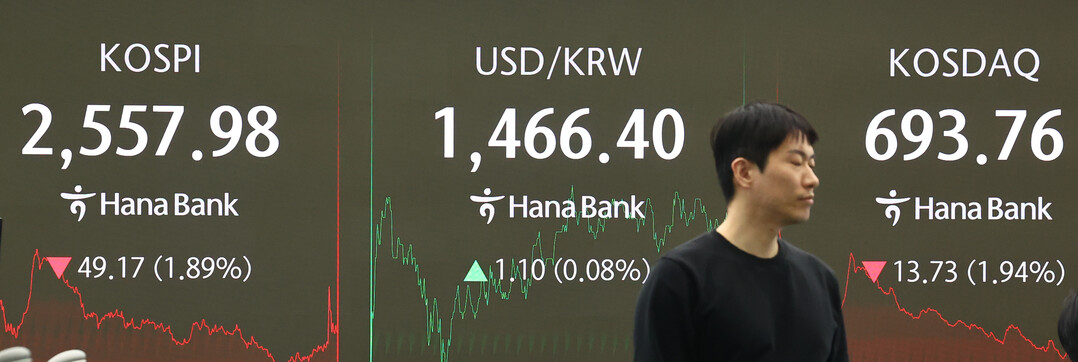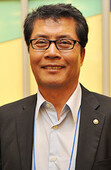
The KOSPI fell sharply by nearly 2% on the 28th, dropping to the 2550 range. This decline was attributed to continued net selling by foreign investors ahead of the resumption of short selling and the anticipated announcement of mutual tariffs by the United States.
On this day, the KOSPI closed at 2557.98, down 49.17 points (1.89%) from the previous trading day. This marks the first time the KOSPI has closed below the 2600 level in ten trading days since the 14th.
Foreign investors net sold 642.1 billion won in the KOSPI market, driving down the index. In the KOSPI 200 futures market, foreigners also net sold 914.5 billion won, marking their largest net selling in a month since February 28th (1.663 trillion won).
Out of the 940 stocks traded on the KOSPI market that day, 730 stocks, or 78%, declined. Among the top market capitalization stocks, Samsung Electronics fell by 2.59%, and SK Hynix also dropped by 3.72%, falling below the 200,000 won mark. Hyundai Motor (-3.53%) and Kia (-2.66%) also experienced declines.
Lee Kyung-min, a researcher at Daishin Securities, explained, "Policy uncertainty has increased due to the Trump administration's abrupt and surprise policy announcements. Amid worsened investor sentiment, the underperformance in the automobile and AI (artificial intelligence) semiconductor sectors continued from the previous day." There is also analysis that concerns over the resumption of short selling on the 31st played a role. Short selling is an investment technique that aims to profit by borrowing and selling shares with the expectation that the stock price will fall, allowing them to be repurchased at a lower price.
KB Securities stated, "This week, the KOSPI reversed its upward trend after four weeks and has given back most of the gains made in March, during which it showed a stronger performance compared to the U.S. stock market."
The KOSDAQ index also closed at 693.76, down 13.73 points (1.94%) from the previous trading day, falling below the 700 level for the first time since January 2nd (686.63) based on the closing price.
[Copyright (c) Global Economic Times. All Rights Reserved.]






























